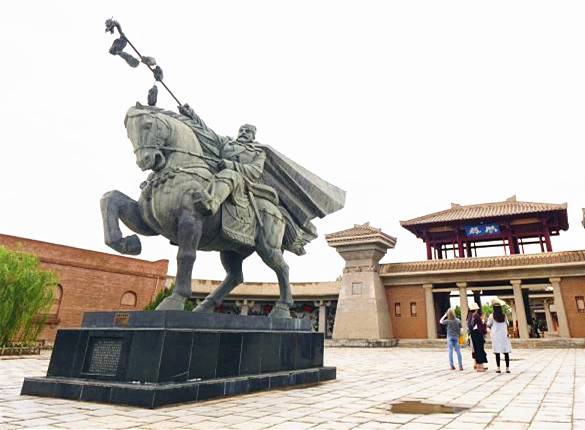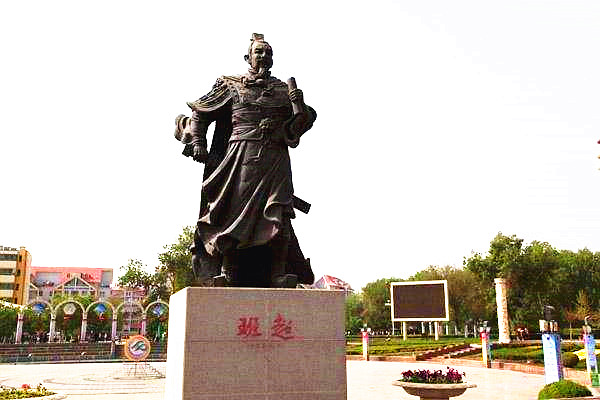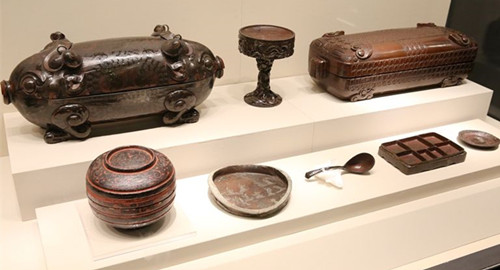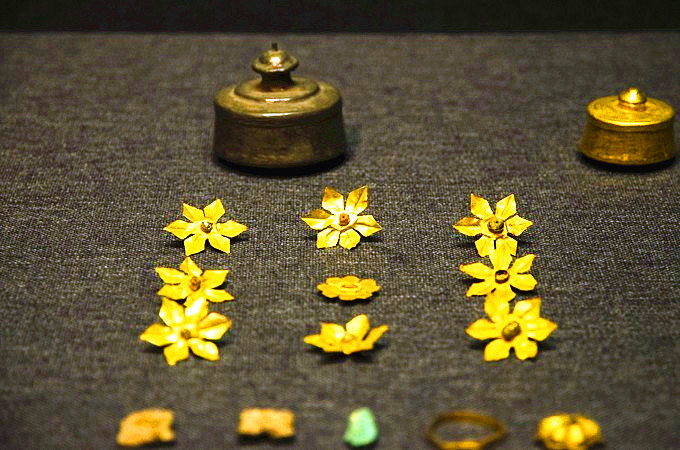Silk Road Brief Introduction: A Business Road from China to Europe opened in the Tang Dynasty
The Silk Road was start with the western region opened by Zhang Qian's in the Han Dynasty, through Gansu and Xinjiang, to Central Asia and Western Asia, connecting the land passages of the Mediterranean countries. Silk products most influence the goods transported by this road, so-called the Silk Road (and many silks are shipped from China). The primary route set in the Han dynasty includes the three routes of South Road, Middle Road, and North Road.
Silk Road History: Uncovering the Unknown Ancient Eurasian Business Road
Zhang Qian first opened the Silk Road in the Western Han Dynasty, Ban Chao opened up the Western Regions again in the Eastern Han Dynasty.
 Zhang Qian Statue
Zhang Qian Statue
The Silk Road, first opened by Zhang Qian in the Western Han Dynasty, was called the "Jigging Through the Sky." After the Romans conquered the Seleucid Empire in Syria and the Ptolemy Dynasty in Egypt, Chinese silk was obtained by the Romans through the Parthian Empire, the Guishuang Empire, and Aksum Empire. However, the Silk Road was interrupted by the Huns (Xiongnu), an ethnic nomadic people, in the late Western Han Dynasty.
Ban Chao in the Eastern Han Dynasty reopened the Western Region after 58 years of isolation in 73 AD and extended this route to Europe for the first time. So the Roman Empire also followed the Silk Road to Luoyang in the Eastern Han Dynasty. This trade route was the first exchange between Europe and China and the complete Silk Road route in the early 21st century.
Business relations between China and Central Asia have increased rapidly since Zhang Qian to the Western Regions. Chinese silk, satin, and other silk products are continually being shipped to Central Asia and Europe through the road that runs through Asia and Europe. Therefore, the Greeks and Romans referred to China as the Cyrus and the Chinese as the Cyris. The so-called "Cyris" means "Silk."
Silk Road in Different Dynasties
Zhang Qian opened up the Silk Road in the Western Han Dynasty, and the routes were gradually formed throughout the Han Dynasty. This famous trade route reached its most prosperous stage with the establishment of the Tang Dynasty, which saw the rapid development of the economy and society. And it experienced its last flourishing period of the Yuan Dynasty.
Silk Road in Western Han Dynasty:
 Banchao Statue
Banchao Statue
The western region refers to the West of Yangguan and Yumen pass plus Xinjiang. During the reign of Emperor Wu of the Han Dynasty, the Central Plains began to strengthen the strategy of the western regions. Zhang Qian set out on his journey to the Western Regions twice, pioneering the world-famous route.
Silk Road in Eastern Han Dynasty:
Ban Chao attacked the northern Huns (Xiongnu), an ethnic nomadic people, and sent an envoy to the western regions, which operated in the west area for 30 years and strengthened the connection between the Western Regions.
Silk Road in Tang Dynasty:
The East and the West have conducted comprehensive and friendly government and people to people exchanges through the silk road. This world-famous silk road has experienced its "Golden Age" of development.
Silk Road in Song Dynasty:
It was impossible to get involved in the northwest region, so the silk road's declines were increasingly evident. In contrast, the rise of the maritime silk road gradually showed signs of replacing the land silk road.
 Relics Unearthed along the Silk Road
Relics Unearthed along the Silk Road
Silk Road in Yuan Dynasty:
Mongolia launched three expeditions to the West and the south, which expanded the territory. Also, the establishment of post roads and the restoration of the Eurasian traffic network made the international caravans flourish again in the vast area of Eurasia.
Marco Polo's Pioneering Voyage:
More than 700 years ago, Marco Polo took four years to travel along the route through the Middle East and Central Asia to ancient China and documented his voyage. It recorded a culture that was entirely unknown for Europe and did much to kick start the Western age of exploration.
Silk Road in Ming and Qing Dynasties:
The government adopted the policy to avoid having contact with other countries. Meanwhile, with the development of navigation technology, maritime transportation took the place of shipbuilding technology, which made the Silk Road trade decline in an all-round way.
 Relics Unearthed along the Silk Road
Relics Unearthed along the Silk Road
The Chinese actively pioneered the Silk Road in the 2nd century BC. Zhang Qian marked it to the Western Region. It was recorded that Emperor Wu of the Han Dynasty sent Zhang Qian to the Western Regions in search of an ally when the Huns besieged China. The mission was going through many hardships and returned to China 13 years later, there were more than one hundred people when they set off, but only two people were left when they returned lastly. The envoys of the Han Dynasty frequently traveled between the Western Regions and Middle-earth after Zhang Qian




































